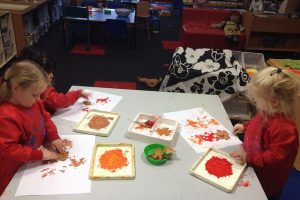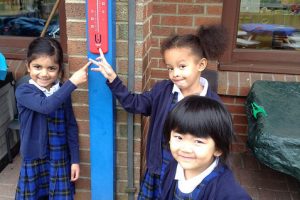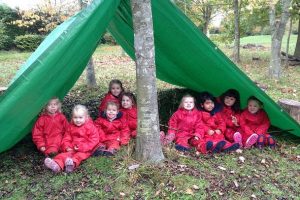As we finish preparations to allow younger girls from age 2 to experience Northampton High School it has sparked thoughts of what makes the best environment for the perfect learning experience, and do the requirements change with different ages? It is probably best to start by thinking about two prime ingredients in all aspects of education, namely safety and enjoyment. A safe learning space for a 2 year old is very similar to that of older nursery age girls. We believe that an open plan space which enables girls to learn routines and rules whilst also making decisions for themselves is important. All nursery aged children should feel that they have space to move around and that their area is full of a wide range of learning and playing options, as well as space to be alone, to be quiet and to watch the goings on of others.
 Girls under 3 do need to have a higher level of adult supervision and support whilst learning to be independent but the requirements of space remain the same. Happiness comes through from our environment but also the types of activities which should be stimulating and challenging, ensuring that well-rounded progress is made. Nursery age girls most definitely require a different experience to boys of the same age. Girls crave structure and routines, where boundaries are clear and expectations high. I am frequently asked about the suitability of girls only at the nursery age and can answer the question simply by giving a tour. Seeing the learning, both direct and indirect, in our setting along with the standards of behaviour and positive friendships is often sufficient to answer the question for me.
Girls under 3 do need to have a higher level of adult supervision and support whilst learning to be independent but the requirements of space remain the same. Happiness comes through from our environment but also the types of activities which should be stimulating and challenging, ensuring that well-rounded progress is made. Nursery age girls most definitely require a different experience to boys of the same age. Girls crave structure and routines, where boundaries are clear and expectations high. I am frequently asked about the suitability of girls only at the nursery age and can answer the question simply by giving a tour. Seeing the learning, both direct and indirect, in our setting along with the standards of behaviour and positive friendships is often sufficient to answer the question for me.
With each year that passes there are subtle changes required to create the best learning space. Role play areas can become more adventurous and allow interaction which is at an age appropriate level. Right now, our Reception girls are able to experiment with light in their own dark room and have a space full of reflective surfaces to create reflections and patterns. Outdoor spaces are vital in the daily routines of children at school and they will gradually need more freedom to create their own games and to turn the space into an area for whatever activity is currently popular. We use our outdoor areas for growing and girls enjoy learning to plant, water, weed and feed; instilling in them the need to be responsible and reliable, or else the plants will wither.
 Vegetation in the classroom is an idea that we are currently investigating in the light of a GDST research project into CO2 levels and classroom productivity. Some of my favourite classrooms as a child were the ones with huge pot plants that generated interesting smells and shadows. They also help to replenish the air with oxygen, an ingredient which can often be taken for granted in the classroom. We are preparing to install some CO2 monitors in our classrooms to monitor the levels and make sure that a window is opened whenever we reach the cut-off and girls begin to lose their focus. I am sure we will also see classes popping outside for a quick-fire exercise session to reinvigorate and boost those O2 levels in preparation for more hard work.
Vegetation in the classroom is an idea that we are currently investigating in the light of a GDST research project into CO2 levels and classroom productivity. Some of my favourite classrooms as a child were the ones with huge pot plants that generated interesting smells and shadows. They also help to replenish the air with oxygen, an ingredient which can often be taken for granted in the classroom. We are preparing to install some CO2 monitors in our classrooms to monitor the levels and make sure that a window is opened whenever we reach the cut-off and girls begin to lose their focus. I am sure we will also see classes popping outside for a quick-fire exercise session to reinvigorate and boost those O2 levels in preparation for more hard work.
 Many of our girls would argue that the perfect learning environment is actually in our Forest School, and I find it hard to disagree. I am always amazed by the work that takes place ‘at the end of the field’, across the full range of curriculum areas. The elements never seem to get in the way as the tarpaulin shelter is rapidly put up. We hope to make this an even more comfortable space when the clouds darken by installing a permanent shelter to go with the composting toilet!
Many of our girls would argue that the perfect learning environment is actually in our Forest School, and I find it hard to disagree. I am always amazed by the work that takes place ‘at the end of the field’, across the full range of curriculum areas. The elements never seem to get in the way as the tarpaulin shelter is rapidly put up. We hope to make this an even more comfortable space when the clouds darken by installing a permanent shelter to go with the composting toilet!
On reflection, I don’t know that anyone can tell you what makes the perfect learning space but there are certainly guiding principles to follow. Our school building may be 25 years old but it has withstood the test of time and continues to provide a wonderful place for girls to learn and play.
Mr Ross Urquhart, Head of Junior School